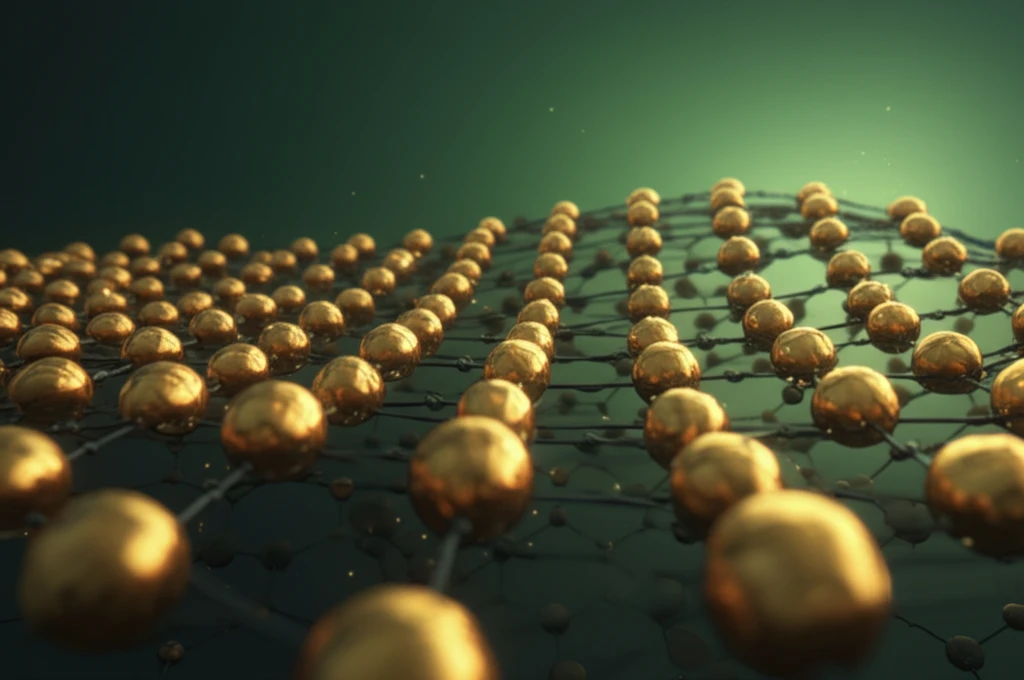
Gold Nanoparticles and Graphene: The Eco-Friendly Catalysts Revolutionizing Chemical Reactions
"Discover how biocompatible gold nanoparticles combined with reduced graphene oxide are creating sustainable and efficient catalysts for the future of chemical synthesis, offering a recyclable solution for the Betti reaction."
In recent years, gold nanoparticles (Au NPs) have garnered significant attention due to their unique properties and extensive applications in fields ranging from catalysis and sensors to electronics and medicine. Their size and shape-dependent characteristics make them invaluable in various technological advancements. However, colloidal nanoparticles are inherently unstable and prone to aggregation, leading to a loss of their desirable properties, such as catalytic activity.
To combat this instability, researchers have explored various stabilization processes, including electrostatic stabilization, steric stabilization using bulky groups, and combinations of both with surfactants or ligands. The choice of stabilization method depends on factors like the desired nanoparticle size, surface characteristics, and intended applications. Among the promising approaches is the use of biocompatible polymers like sodium alginate, chitosan, and polyethylene glycol (PEG).
Polyethylene glycol and its functionalized derivatives have emerged as particularly attractive due to their thermal stability, optical transparency, permeability, mechanical properties, and controllable degradation rates. Furthermore, combining noble nanoparticles with carbonaceous materials like carbon nanotubes, graphene, and their derivatives can significantly enhance their catalytic, electrical, and electrochemical properties. This synergy has opened new avenues for creating advanced nanocomposites with tailored functionalities.
Revolutionizing Catalysis with Graphene-Gold Nanocomposites

Graphene, a two-dimensional graphitic carbon material, has attracted considerable attention due to its remarkable chemical, physical, and optical properties, as well as its biocompatibility. The presence of polar groups in graphene oxide (GO) makes it an excellent substrate for stabilizing and nucleating metal ions, hydrophilic molecules, and polymers, leading to the creation of nanocomposites with smart properties. Covalent modification of GO with PEG (PEGylation) can prevent graphene sheet agglomeration and facilitate the formation of stable aqueous dispersions.
- Enhanced Stability: Prevents aggregation of nanoparticles, maintaining their catalytic activity.
- Improved Dispersion: Ensures uniform distribution of Au NPs on the graphene support.
- Biocompatibility: Utilizes PEG, a non-toxic polymer, making the catalyst suitable for biomedical applications.
- Recyclability: Allows for easy recovery and reuse of the catalyst in multiple reactions.
The Future of Sustainable Catalysis
The development of rMGO-Au NPs composite represents a significant step forward in sustainable catalysis. Its ability to be easily separated and reused multiple times, combined with its high catalytic activity and biocompatible nature, makes it an attractive alternative to traditional catalysts. This innovative approach not only promotes environmentally friendly chemical processes but also opens doors for new applications in various industries, paving the way for a greener and more sustainable future.
